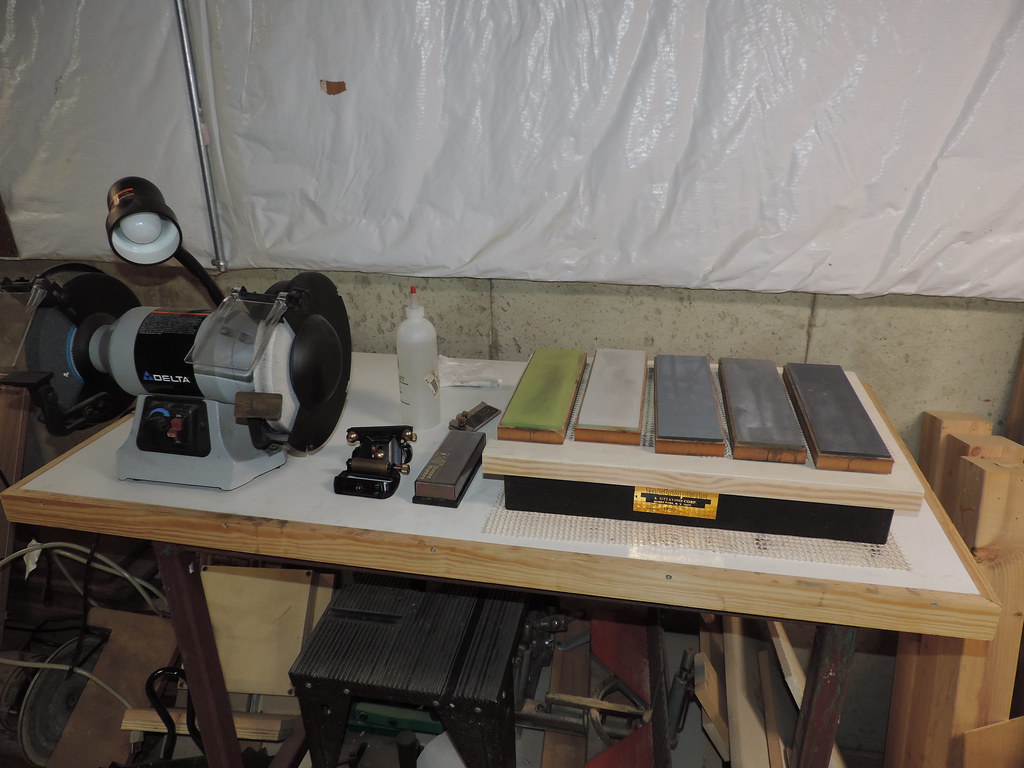I have tried multiple ways of sharpening my plane blades and chisels. Right now I have water stones 8000/4000 1000 and a dmt diamond plate (300 grit) that I use to flatten them and to establish bevels. I just got oil stones as well to try them, but i'm not getting as nice of a finish on the oil stones as I was on my water stones (I don't think the final oil stone is as high of a grit as my 8000 stone). My problem is that my dmt diamond plate takes forever to remove material. I think I may have messed it up by pushing to hard on it. What would everyone else recommend doing? Ditch the water stones and get a finer oil stone? Keep the water stones?
I was considering either,
getting a trend diamond plate
Replacing the DMT plate
Getting an Atoma plate




 Reply With Quote
Reply With Quote







 . Resist the temptation!
. Resist the temptation!